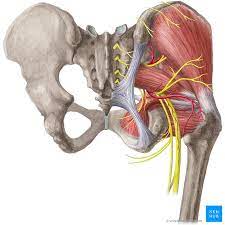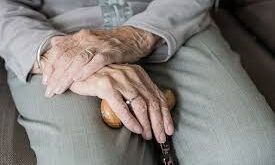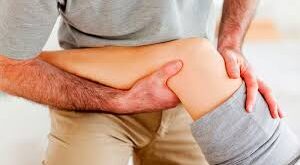Abstract
Background: Chronic peripheral joint pain due to osteoarthritis (OA) is extremely prevalent and a major cause of physical dysfunction and psychosocial distress. Exercise is recommended to reduce joint pain and improve physical function, but the effect of exercise on psychosocial function (health beliefs, depression, anxiety and quality of life) in this population is unknown.
Objectives: To improve our understanding of the complex inter-relationship between pain, psychosocial effects, physical function and exercise.
Search methods: Review authors searched 23 clinical, public health, psychology and social care databases and 25 other relevant resources including trials registers up to March 2016. We checked reference lists of included studies for relevant studies. We contacted key experts about unpublished studies.

Selection criteria: To be included in the quantitative synthesis, studies had to be randomised controlled trials of land- or water-based exercise programmes compared with a control group consisting of no treatment or non-exercise intervention (such as medication, patient education) that measured either pain or function and at least one psychosocial outcome (self-efficacy, depression, anxiety, quality of life). Participants had to be aged 45 years or older, with a clinical diagnosis of OA (as defined by the study) or self-reported chronic hip or knee (or both) pain (defined as more than six months’ duration).To be included in the qualitative synthesis, studies had to have reported people’s opinions and experiences of exercise-based programmes (e.g. their views, understanding, experiences and beliefs about the utility of exercise in the management of chronic pain/OA).
Data collection and analysis: We used standard methodology recommended by Cochrane for the quantitative analysis. For the qualitative analysis, we extracted verbatim quotes from study participants and synthesised studies of patients’ views using framework synthesis. We then conducted an integrative review, synthesising the quantitative and qualitative data together.
Main results: Twenty-one trials (2372 participants) met the inclusion criteria for quantitative synthesis. There were large variations in the exercise programme’s content, mode of delivery, frequency and duration, participant’s symptoms, duration of symptoms, outcomes measured, methodological quality and reporting. Comparator groups were varied and included normal care; education; and attention controls such as home visits, sham gel and wait list controls. Risk of bias was high in one and unclear risk in five studies regarding the randomisation process, high for 11 studies regarding allocation concealment, high for all 21 studies regarding blinding, and high for three studies and unclear for five studies regarding attrition. Studies did not provide information on adverse effects.There was moderate quality evidence that exercise reduced pain by an absolute percent reduction of 6% (95% confidence interval (CI) -9% to -4%, (9 studies, 1058 participants), equivalent to reducing (improving) pain by 1.25 points from 6.5 to 5.3 on a 0 to 20 scale and moderate quality evidence that exercise improved physical function by an absolute percent of 5.6% (95% CI -7.6% to 2.0%; standardised mean difference (SMD) -0.27, 95% CI -0.37 to -0.17, equivalent to reducing (improving) WOMAC (Western Ontario and McMaster Universities Osteoarthritis Index) function on a 0 to 100 scale from 49.9 to 44.3) (13 studies, 1599 participants)). Self-efficacy was increased by an absolute percent of 1.66% (95% CI 1.08% to 2.20%), although evidence was low quality (SMD 0.46, 95% CI 0.34 to 0.58, equivalent to improving the ExBeliefs score on a 17 to 85 scale from 64.3 to 65.4), with small benefits for depression from moderate quality evidence indicating an absolute percent reduction of 2.4% (95% CI -0.47% to 0.5%) (SMD -0.16, 95% CI -0.29 to -0.02, equivalent to improving depression measured using HADS (Hospital Anxiety and Depression Scale) on a 0 to 21 scale from 3.5 to 3.0) but no clinically or statistically significant effect on anxiety (SMD -0.11, 95% CI -0.26 to 0.05, 2% absolute improvement, 95% CI -5% to 1% equivalent to improving HADS anxiety on a 0 to 21 scale from 5.8 to 5.4; moderate quality evidence). Five studies measured the effect of exercise on health-related quality of life using the 36-item Short Form (SF-36) with statistically significant benefits for social function, increasing it by an absolute percent of 7.9% (95% CI 4.1% to 11.6%), equivalent to increasing SF-36 social function on a 0 to 100 scale from 73.6 to 81.5, although the evidence was low quality. Evidence was downgraded due to heterogeneity of measures, limitations with blinding and lack of detail regarding interventions. For 20/21 studies, there was a high risk of bias with blinding as participants self-reported and were not blinded to their participation in an exercise intervention.Twelve studies (with 6 to 29 participants) met inclusion criteria for qualitative synthesis. Their methodological rigour and quality was generally good. From the patients’ perspectives, ways to improve the delivery of exercise interventions included: provide better information and advice about the safety and value of exercise; provide exercise tailored to individual’s preferences, abilities and needs; challenge inappropriate health beliefs and provide better support.An integrative review, which compared the findings from quantitative trials with low risk of bias and the implications derived from the high-quality studies in the qualitative synthesis, confirmed the importance of these implications.
Authors’ conclusions: Chronic hip and knee pain affects all domains of people’s lives. People’s beliefs about chronic pain shape their attitudes and behaviours about how to manage their pain. People are confused about the cause of their pain, and bewildered by its variability and randomness. Without adequate information and advice from healthcare professionals, people do not know what they should and should not do, and, as a consequence, avoid activity for fear of causing harm. Participation in exercise programmes may slightly improve physical function, depression and pain. It may slightly improve self-efficacy and social function, although there is probably little or no difference in anxiety. Providing reassurance and clear advice about the value of exercise in controlling symptoms, and opportunities to participate in exercise programmes that people regard as enjoyable and relevant, may encourage greater exercise participation, which brings a range of health benefits to a large population of people.
Cochrane Database Syst Rev. 2018 Apr 17;4(4):CD010842.
M Hurley, K Dickson. R Hallett, R Grant, H Hauari et al
 Blog de Fisioterapia Fisioterapia
Blog de Fisioterapia Fisioterapia



